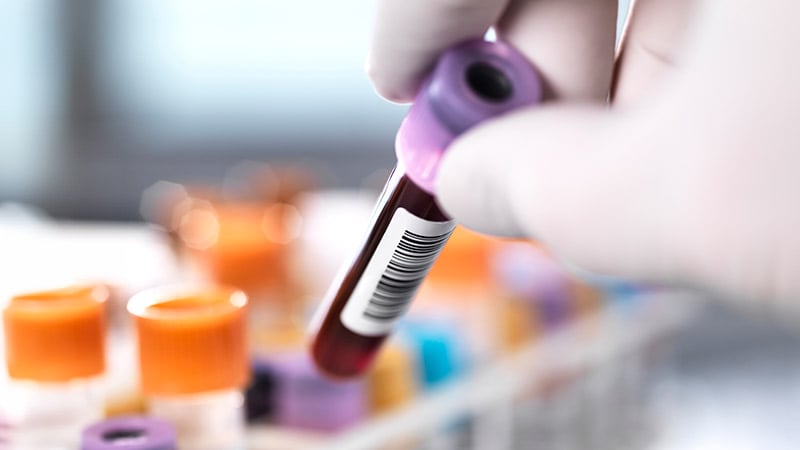insight - Computational Biology - # Metabolomic Profiling for Cancer Detection in Rheumatic Diseases
Serum Metabolome Analysis Enables Reliable Cancer Diagnosis in Rheumatic and Musculoskeletal Diseases
Core Concepts
A diagnostic model based on serum metabolite and lipid concentrations can accurately identify cancer in patients with rheumatic and musculoskeletal diseases.
Abstract
The study aimed to assess whether changes in the serum metabolome profile could indicate the presence of cancer in patients with rheumatic and musculoskeletal diseases (RMDs). Researchers performed nuclear magnetic resonance analysis of serum samples from patients with rheumatoid arthritis (RA), with and without a history of invasive cancer.
The final diagnostic model comprised five variables: the concentrations of acetate, creatine, glycine, and formate, as well as the L1/L6 lipid ratio. This model demonstrated excellent performance, with an area under the receiver operating characteristic curve (AUC) of 0.987 and high sensitivity (0.932) and specificity (0.946) for cancer diagnosis in the RA cohort.
The model also performed well in a blinded validation cohort of patients with RA and spondyloarthritis, with an AUC of 0.937 and 0.927, respectively. However, it was less accurate in identifying patients with noninvasive or in situ precancerous lesions and nonmelanoma skin cancers, and it did not perform well in the systemic lupus erythematosus (SLE) cohort.
The authors conclude that this limited-invasive metabolomic assay has the potential to facilitate timely cancer diagnosis in patients with paraneoplastic rheumatic syndromes and serve as a valuable active surveillance tool for RA and spondyloarthritis patients at high risk of developing cancer.
Serum Metabolome Identifies Cancer in Rheumatic Disease
Stats
The diagnostic model yielded an AUC of 0.987 and high sensitivity (0.932) and specificity (0.946) for cancer diagnosis in the RA cohort.
The model had an AUC of 0.937 in the blinded validation cohort of patients with RA and an AUC of 0.927 in the merged RA and spondyloarthritis cohort.
The model accurately diagnosed cancer in all the patients with paraneoplasia, but only in 50% of patients with noninvasive or in situ precancerous lesions and nonmelanoma skin cancers.
The performance of the model was poor in the SLE cohort, with an AUC of 0.656.
Quotes
"This limited-invasive assay has considerable potential of high clinical value to facilitate timely diagnosis of cancer in paraneoplastic rheumatic syndromes as well as become a valuable active surveillance tool in RA and SpA [spondyloarthritis] patients with a high risk of developing cancer."
Key Insights Distilled From
by Antara at www.medscape.com 05-10-2024
https://www.medscape.com/viewarticle/serum-metabolome-variations-identify-cancer-rheumatic-2024a10008zu
Deeper Inquiries
How can the diagnostic model be further improved to accurately identify early-stage, low-grade tumors and noninvasive precancerous lesions?
To enhance the diagnostic model's ability to identify early-stage, low-grade tumors and noninvasive precancerous lesions, several strategies can be implemented. Firstly, expanding the metabolite and lipid profile analyzed in the model to include additional markers specific to these types of cancers could improve sensitivity and specificity. Incorporating markers associated with early tumorigenesis or precancerous changes, such as specific genetic mutations or metabolic pathways, may enhance the model's predictive power. Furthermore, refining the model through machine learning algorithms or artificial intelligence to recognize subtle metabolic alterations indicative of early-stage tumors could also boost its accuracy in detecting these conditions.
What are the potential limitations or confounding factors that may have contributed to the poor performance of the model in the SLE cohort, and how can these be addressed?
Several factors may have contributed to the poor performance of the model in the SLE cohort. One key limitation could be the distinct metabolic profile of SLE compared to other rheumatic diseases, leading to challenges in identifying cancer-specific metabolic alterations. Additionally, the presence of overlapping symptoms between SLE and cancer may have confounded the model's ability to differentiate between the two conditions accurately. To address these limitations, conducting further research to identify SLE-specific metabolic markers associated with cancer development and refining the model to account for the unique metabolic signatures of SLE could improve its performance in this patient population.
What other potential applications or extensions of this metabolomic profiling approach could be explored for early cancer detection or monitoring in rheumatic and musculoskeletal diseases?
Beyond cancer detection in rheumatic and musculoskeletal diseases, metabolomic profiling holds promise for various other applications in early cancer detection and monitoring. One potential extension is the use of metabolomic signatures to predict treatment response and disease progression in cancer patients with comorbid rheumatic diseases. Additionally, exploring the utility of metabolomic profiling in identifying specific cancer subtypes or treatment resistance mechanisms in these patient populations could guide personalized treatment strategies. Furthermore, leveraging metabolomic data for cancer risk stratification and surveillance in individuals with a genetic predisposition to both rheumatic diseases and cancer could aid in early intervention and improved outcomes.
0
